- Joined
- Nov 19, 2003
- Messages
- 1,290
Date: 6/8/2005 10:58:44 AM
Author: Wink
Date: 6/8/2005 9:37:27 AM
Author: strmrdr
Is the red vs green center a quality/performance issue or a personality issue?
How is it considered when assigning the cut grade?
Paul often cuts his diamonds with a 40.5 pavilion angle are they going to be downgraded under the AGS system?
No, it is an informational issue. 40.5 is lower than what Paul usually cuts I believe, but within the parameters of the AGS ideal if I remember correctly. Pauls stones are still receiving the coveted AGS 0 cut grade. I do not think that the green/red table reflection will be anything other than an interesting bit of information that can be instantly perceived from looking at the image. I just thought it a fascinating bit of trivia that was presented to us at the AGS lecture at their laboratory and was sharing it with you. Later I will try to show you part of the charts that were given to us at AGS, it will be much more relevant when seen with other images than when taken out of context.
While light from the 0 - 45 degree angles will not be as bright as the light from 45 to 75 degrees it is still an important part of what needs to happen in the stone for it to proform well. The green light should be minimal when possible but is certainly better than no light or ''leakage'' as it is often called. Like light from the blue area of 75 to 90 degrees it plays a part in the contrast that makes a stone dynamic and lively. The contrast obviously will not be as dramatic as that from the obscuration area, but will add to the look of the stone in a positive manner.
Wink
Wink,
This view is what my concern with this system is all about. I think that the problem stems from the fact that the green in this device goes all the way from 45 degrees to 90 degrees. If you do a ray trace on the green areas in that stone, you will see that the green areas in most of the stone, except for the very outermost areas near the girdle, are generated at angles that are between 47 degrees and 55 degrees. That center spot of green that is what the GIA used to call a "table reflection" is actually light entering the table at about 47.2 degrees with a pavilion main angle of 40.5 degrees. My problem is that I doubt very much that light entering the table at 47+ degrees is dramatically different than light entering at just under 45 degrees, which is the cutoff for the green area. The other, minor problem, that I have with this is that they have not made you aware that the most "fire" that the stone can generate comes at those low entry and exit angles. This device concentrates on brightness at the expense of "fire". I think that this device needs some intermediate color so that the sharp cutoff between green and red is not so blatant. This thing is kind of the opposite of a traffic light and could be used that way by jewelers who don''t really understand it. The good part is that the AGS does have all their ducks lined up and if you use this device ALONG with their grading on a stone, then you will be O.K. If you are looking at an ungraded stone with this device, then you need to be looking at the stone with a more analytical eye to it''s angles, etc. since this device could lead you to the wrong conclusions about a stone. You still have to LOOK at a stone and only use these devices to back up what your eyes are telling you.



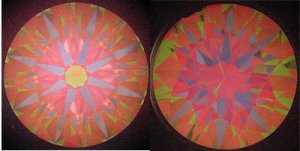
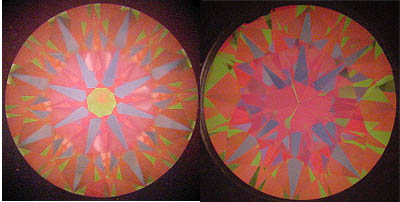
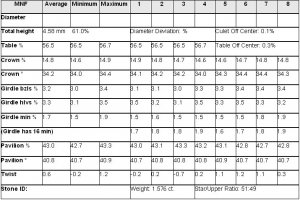

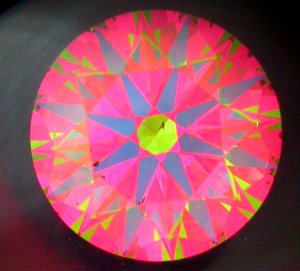
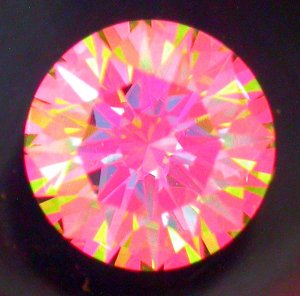
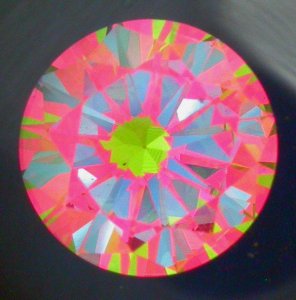


300x240.png)